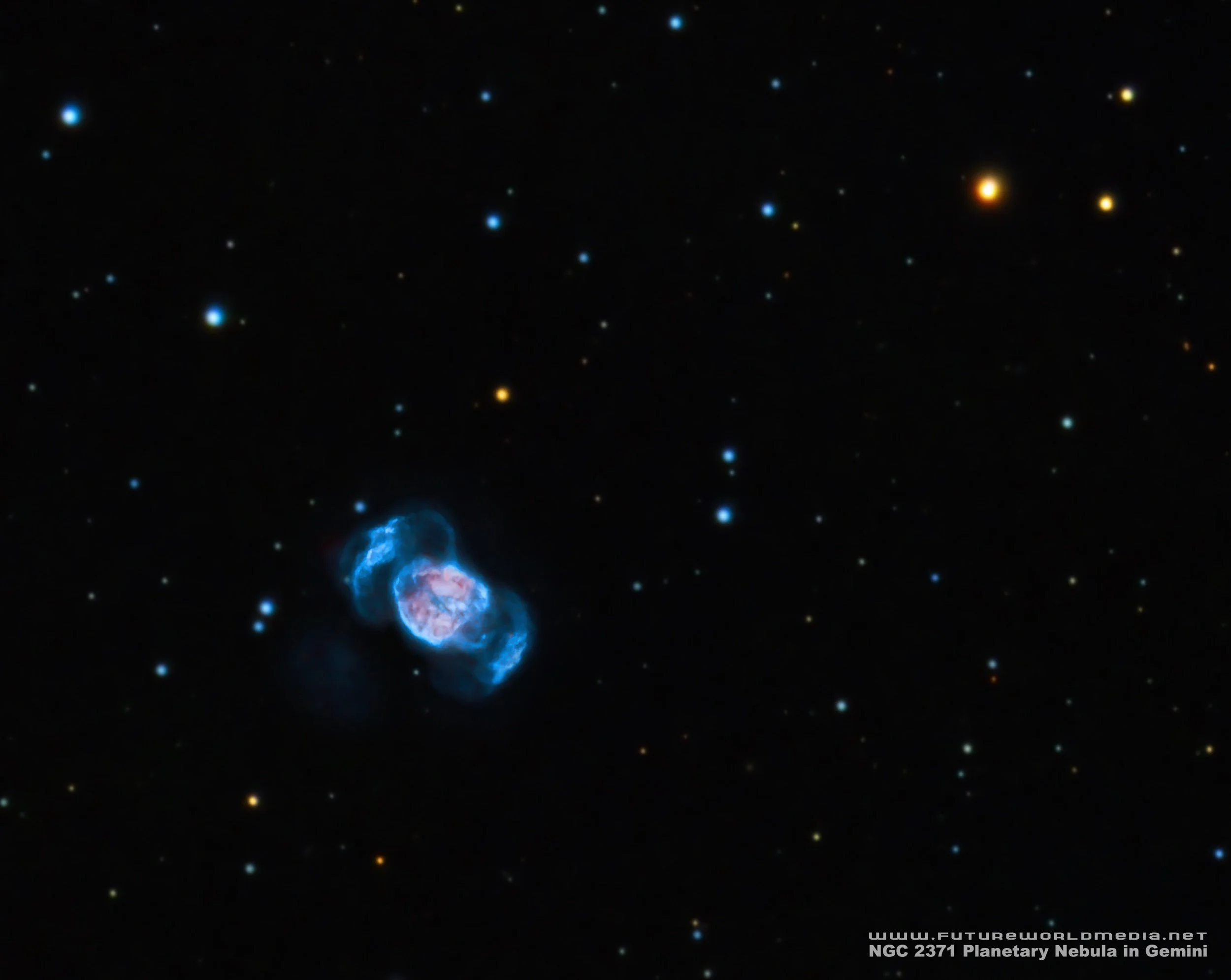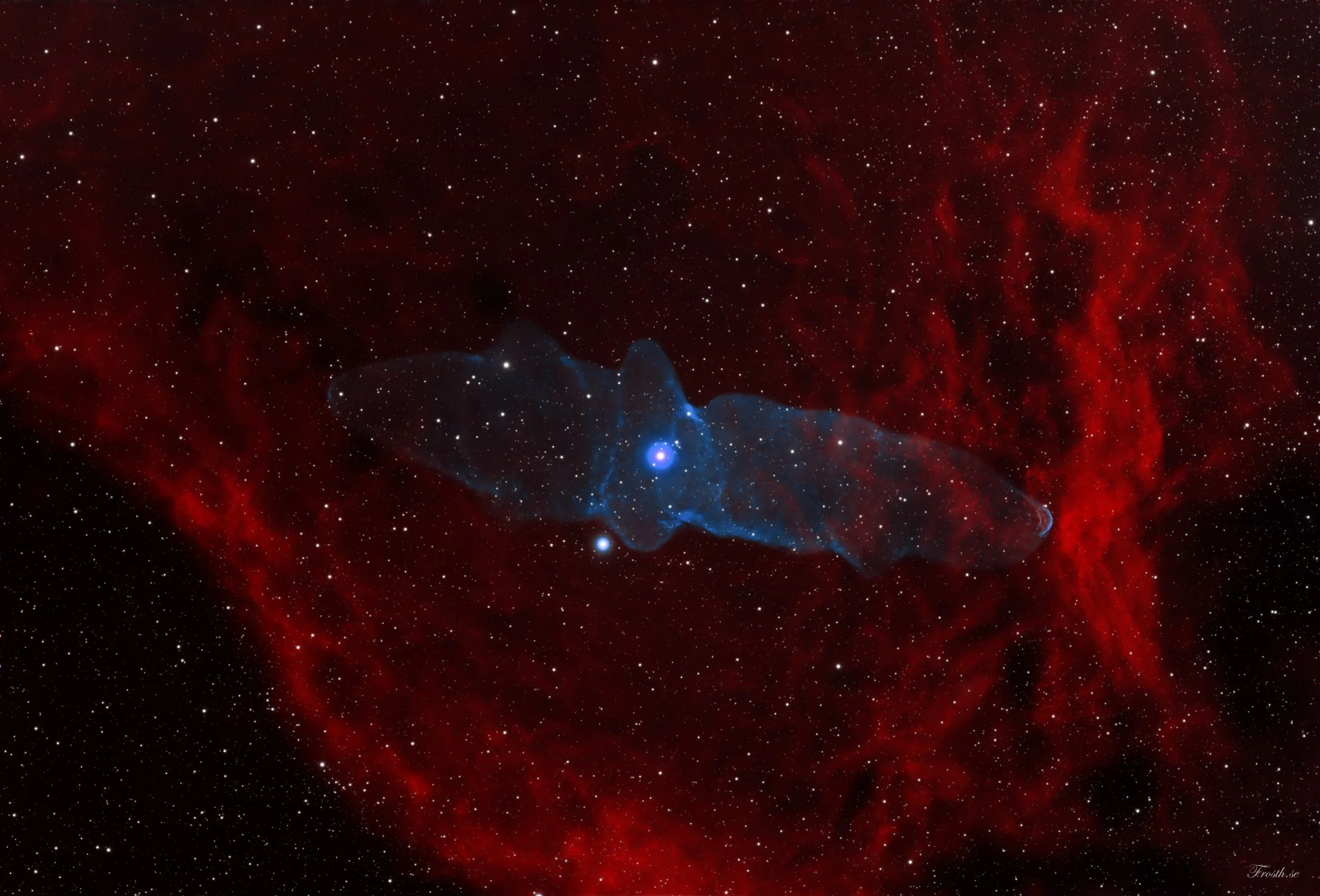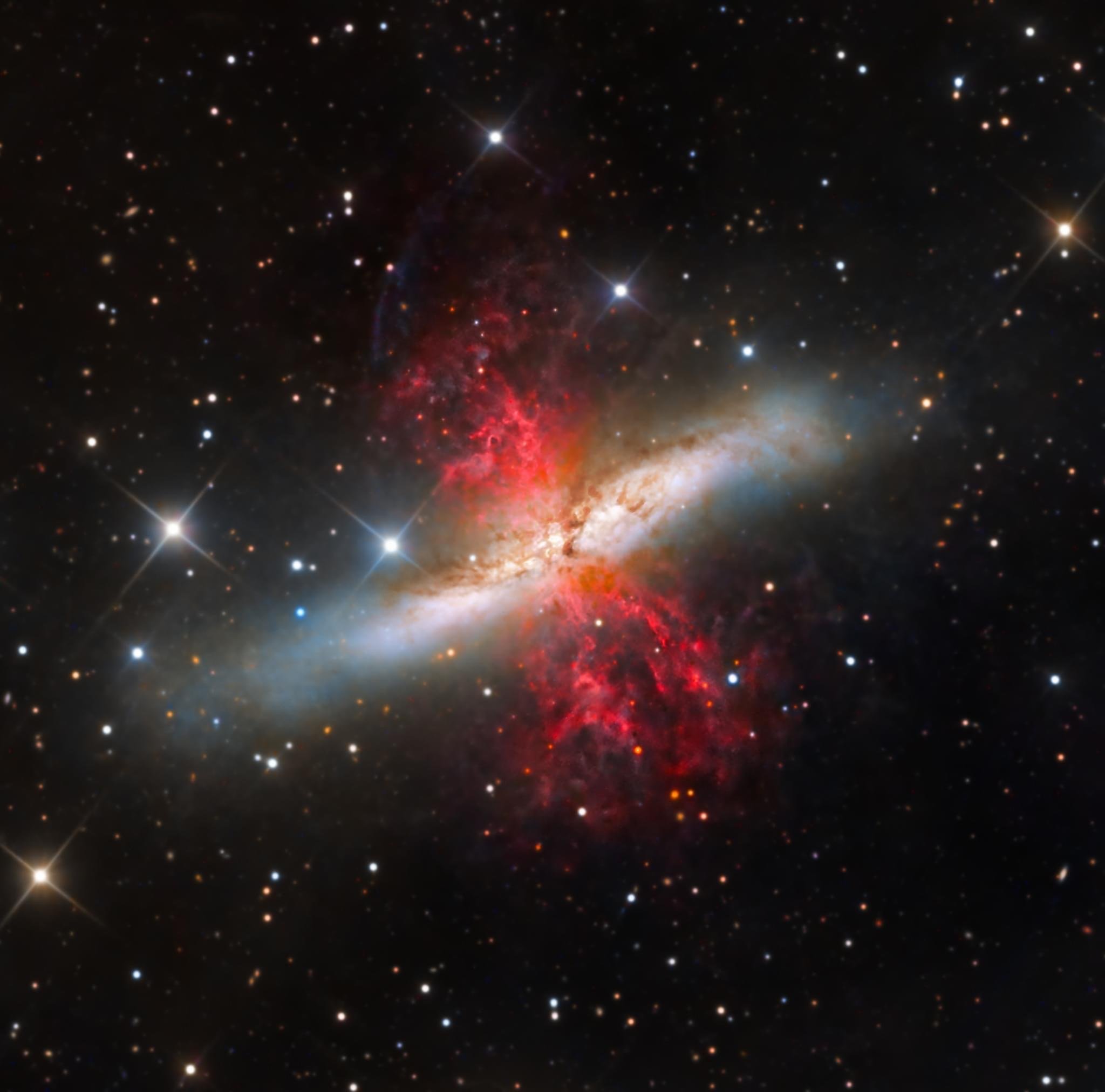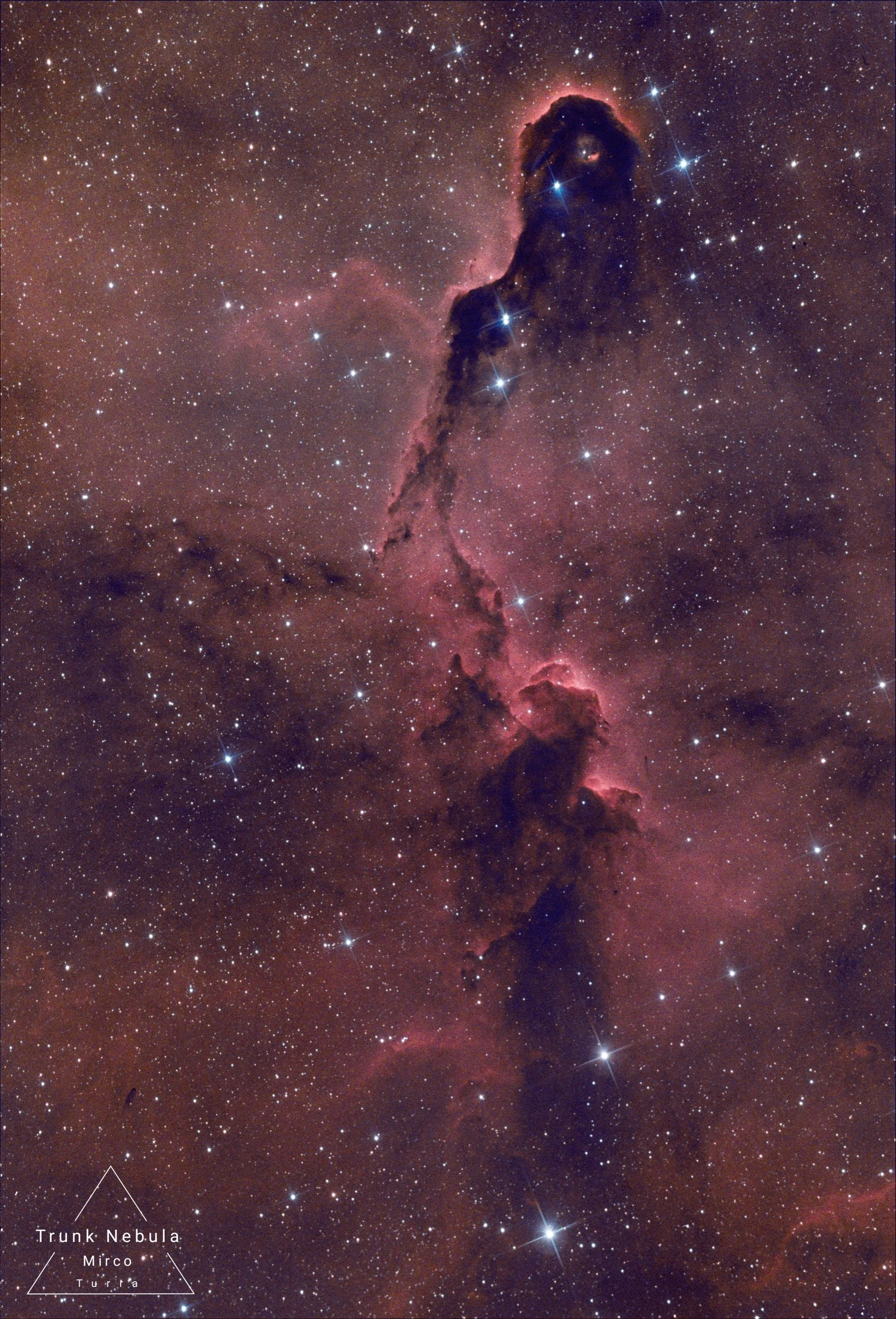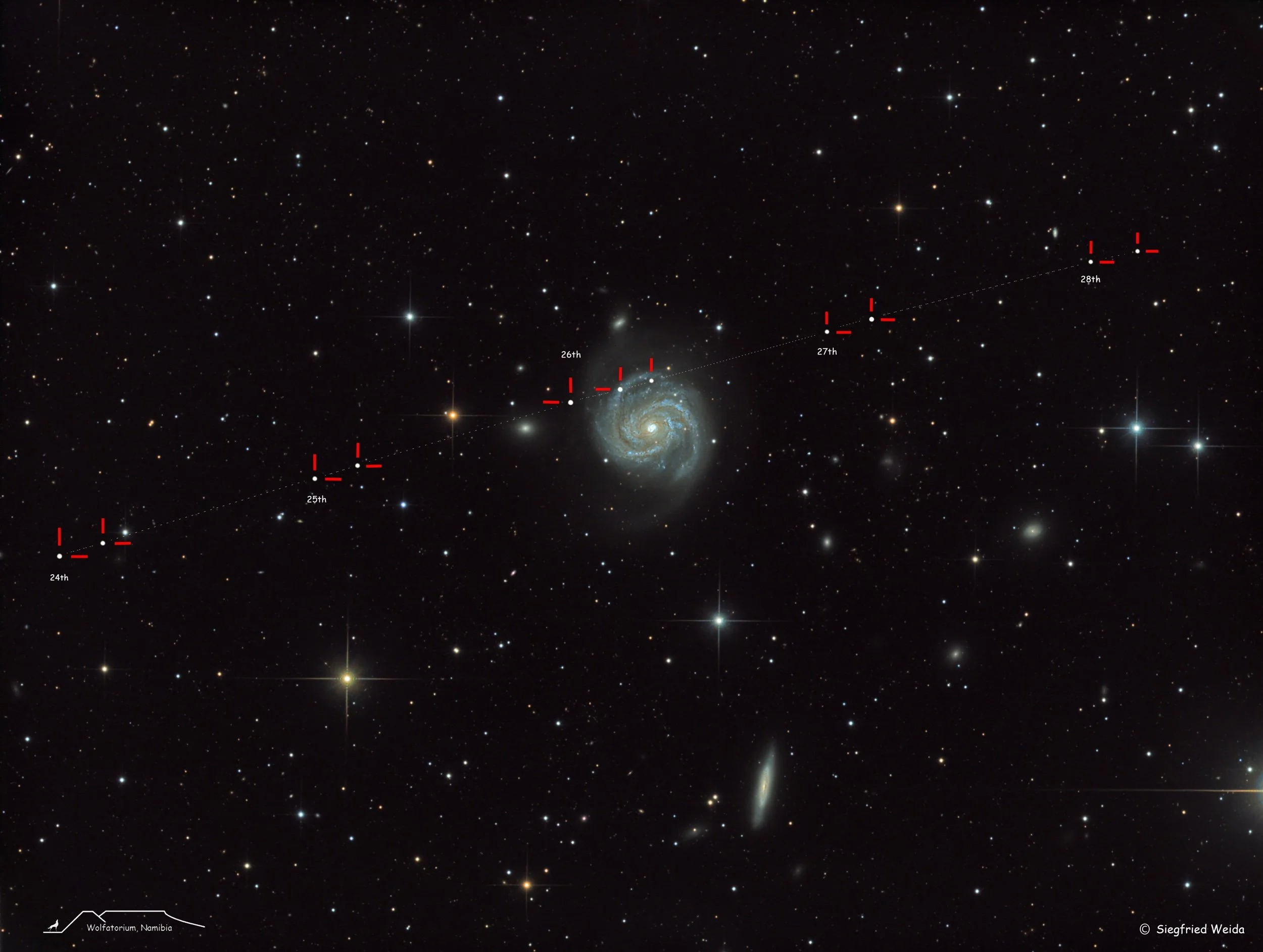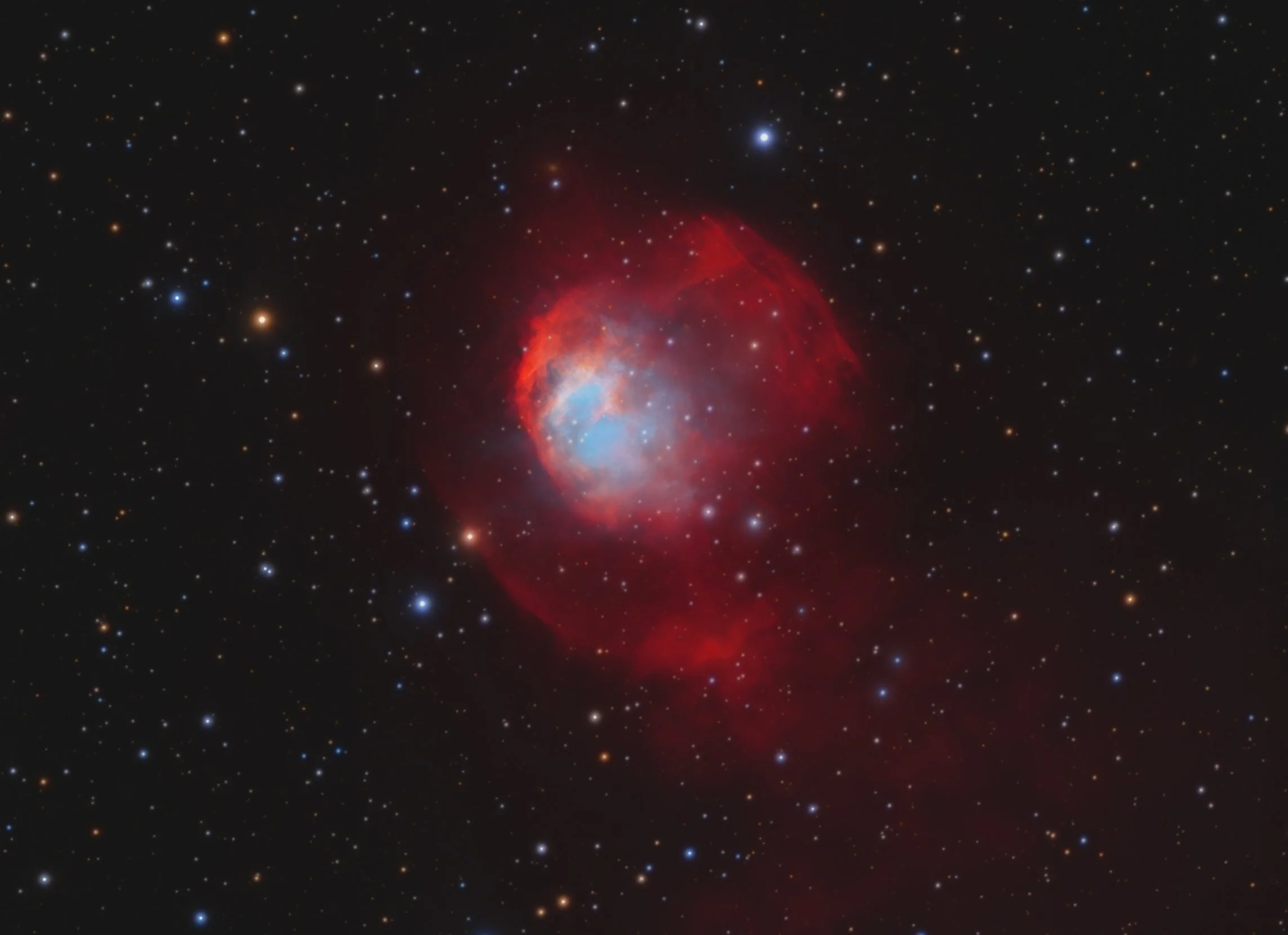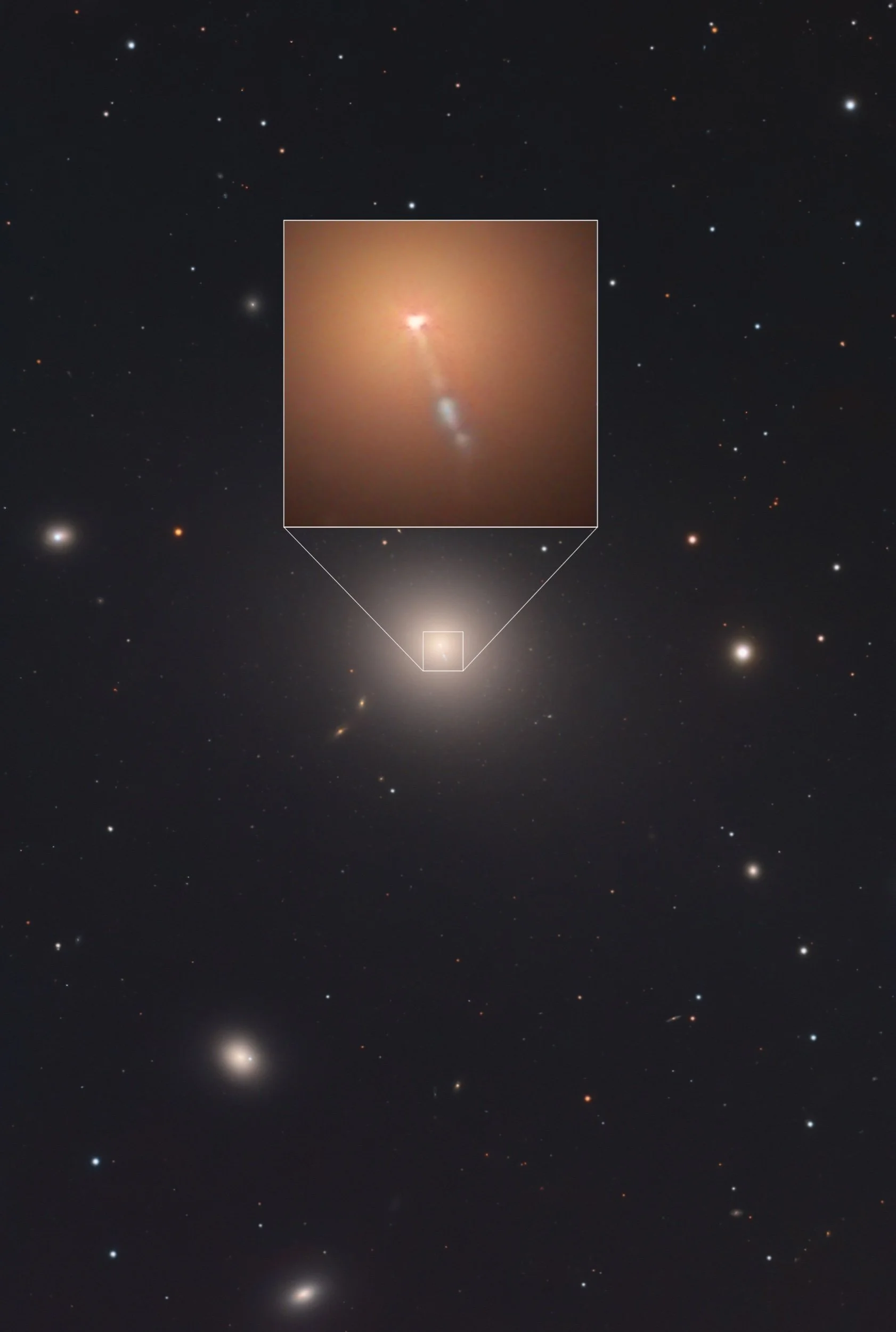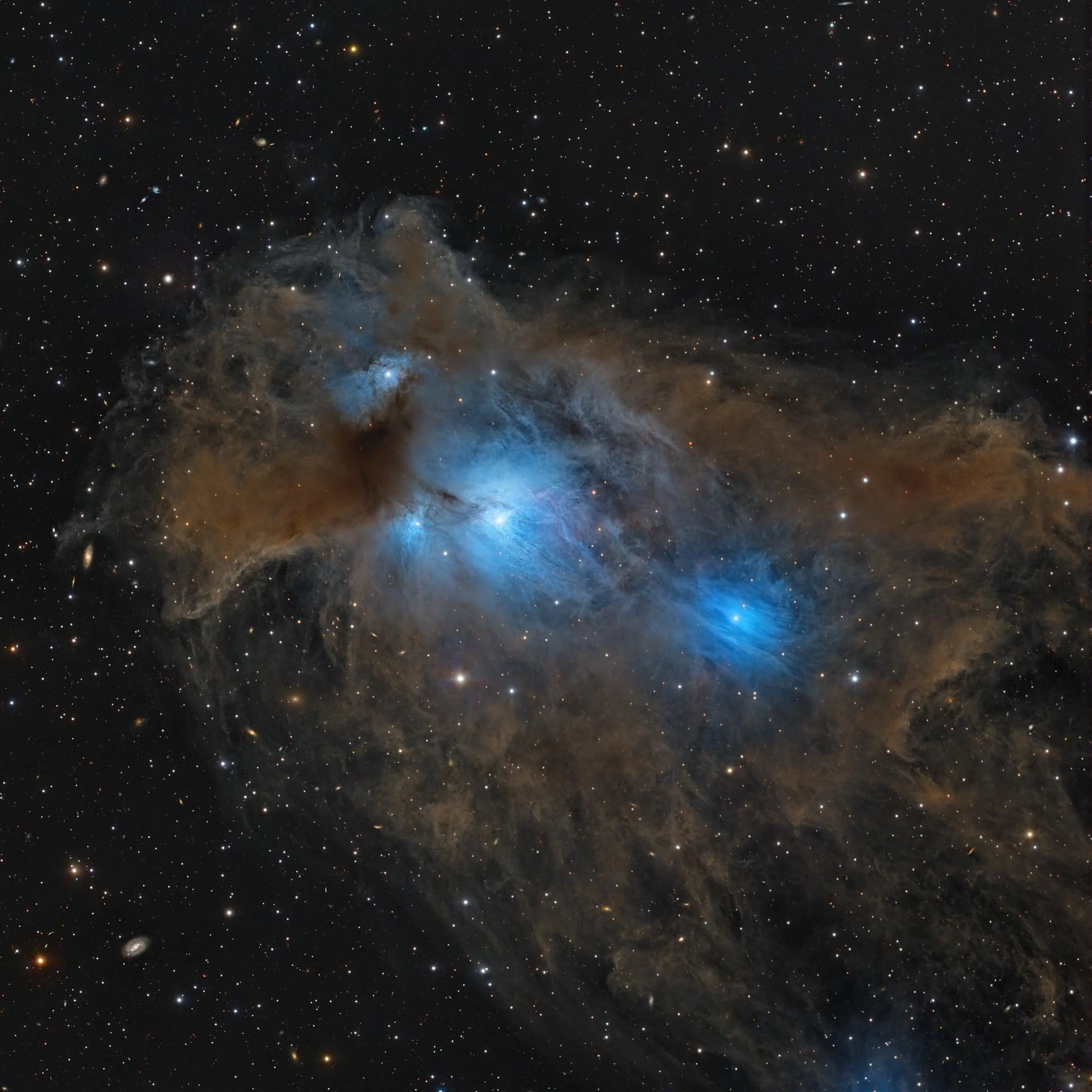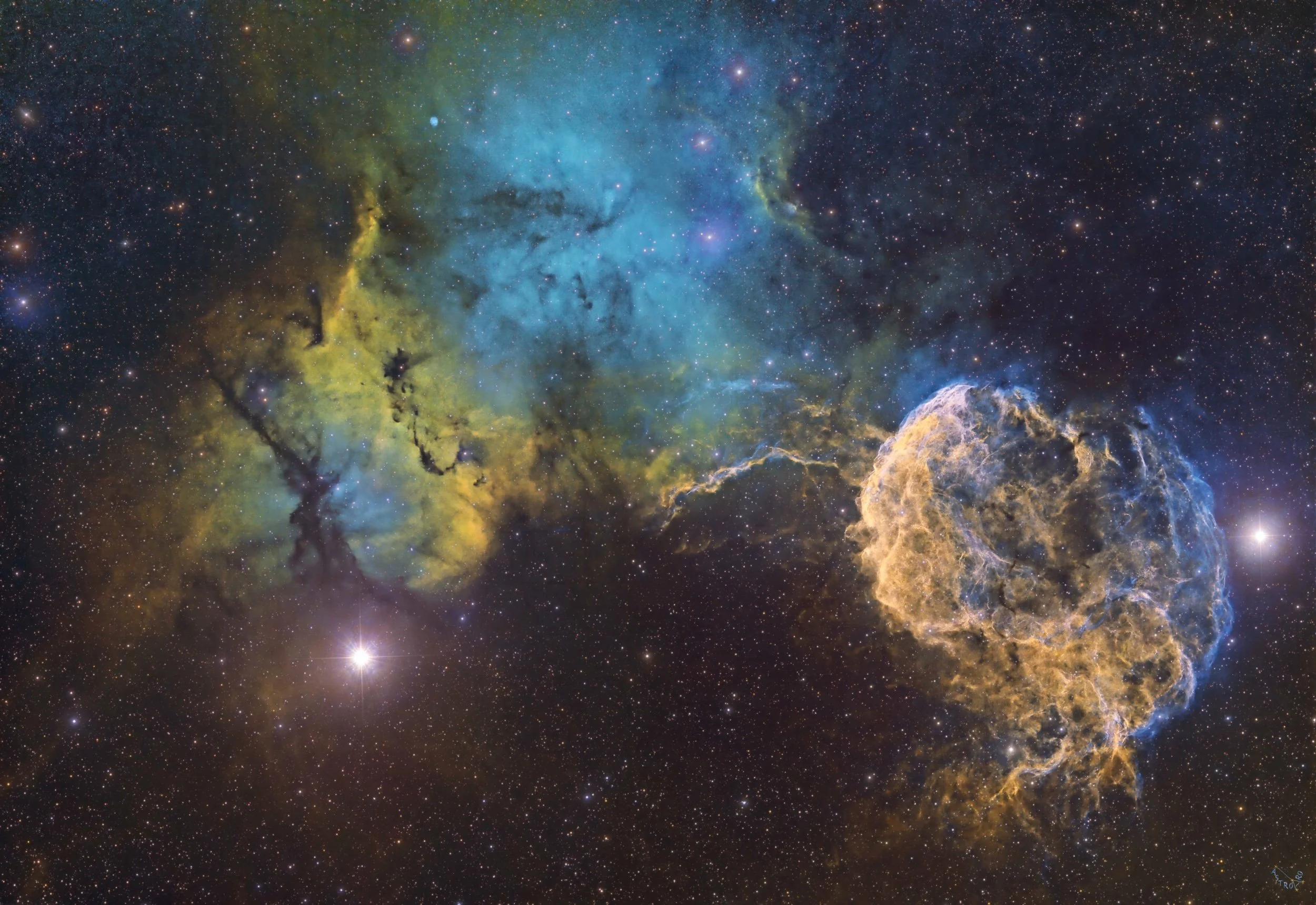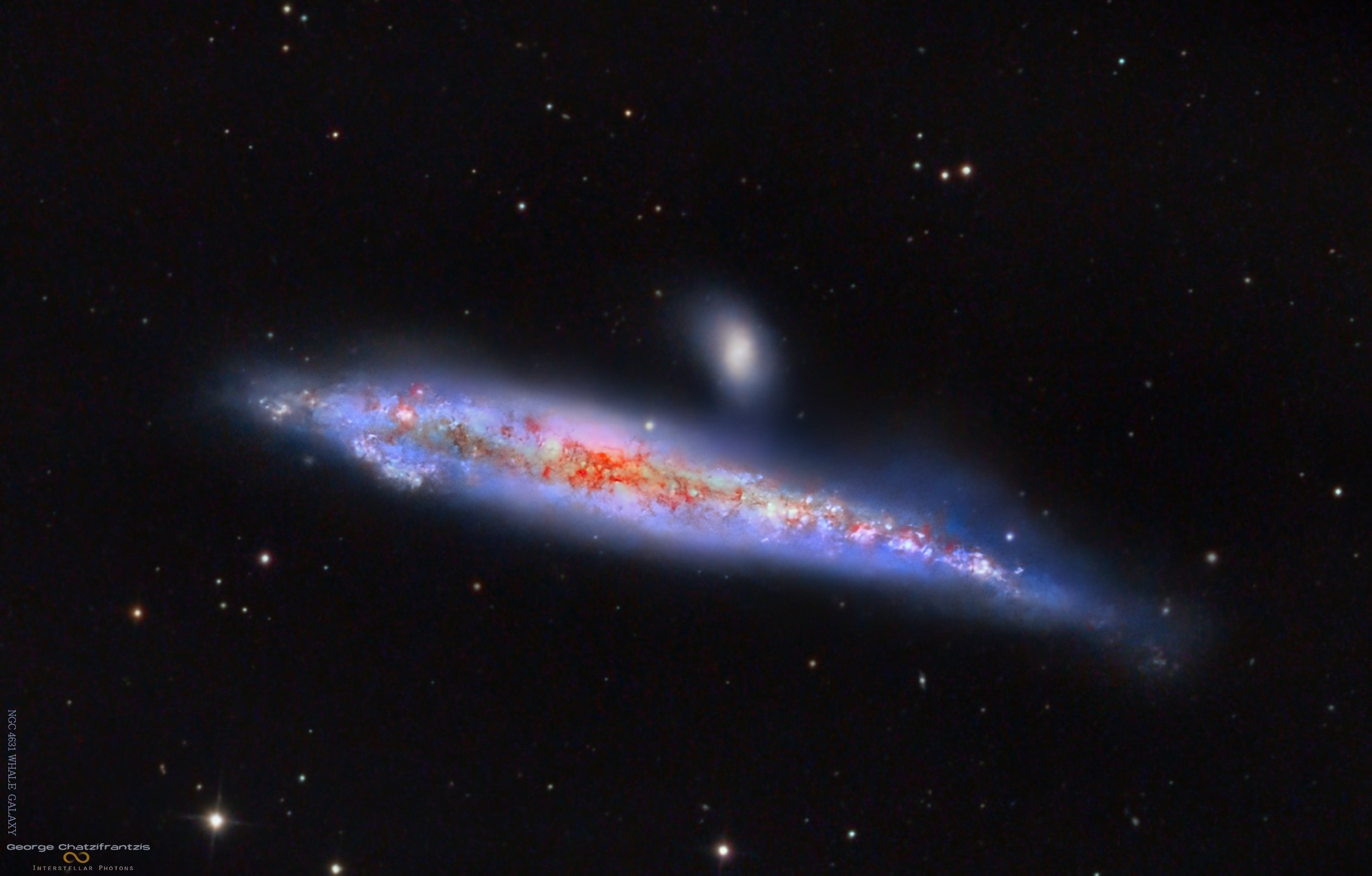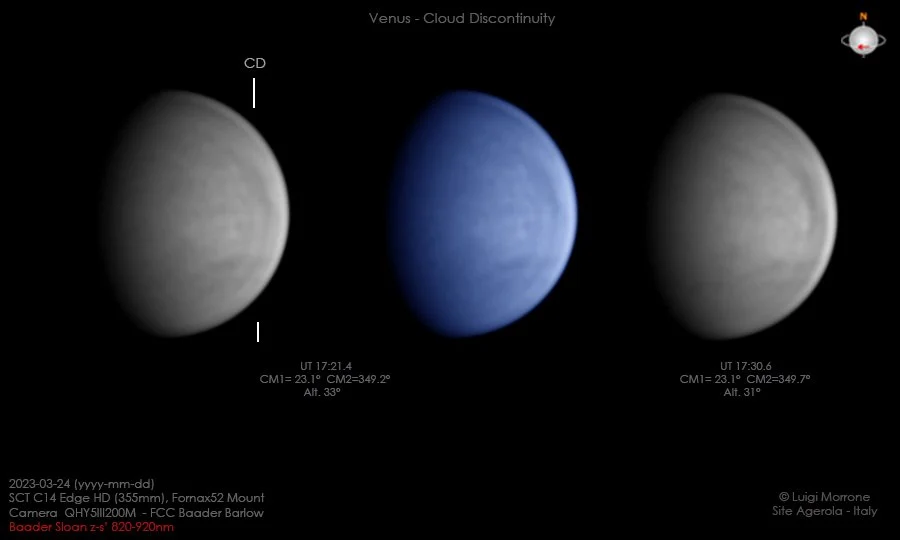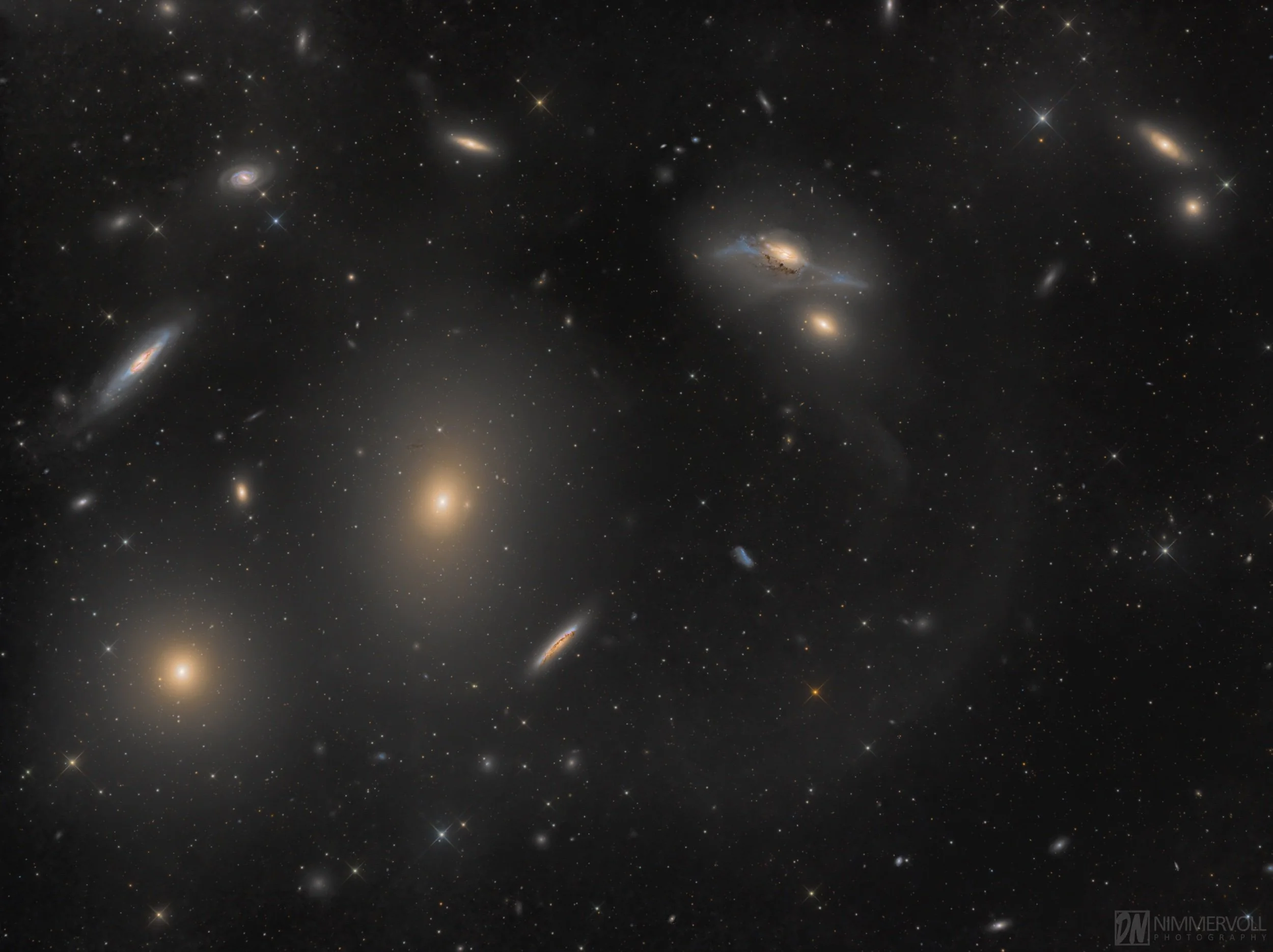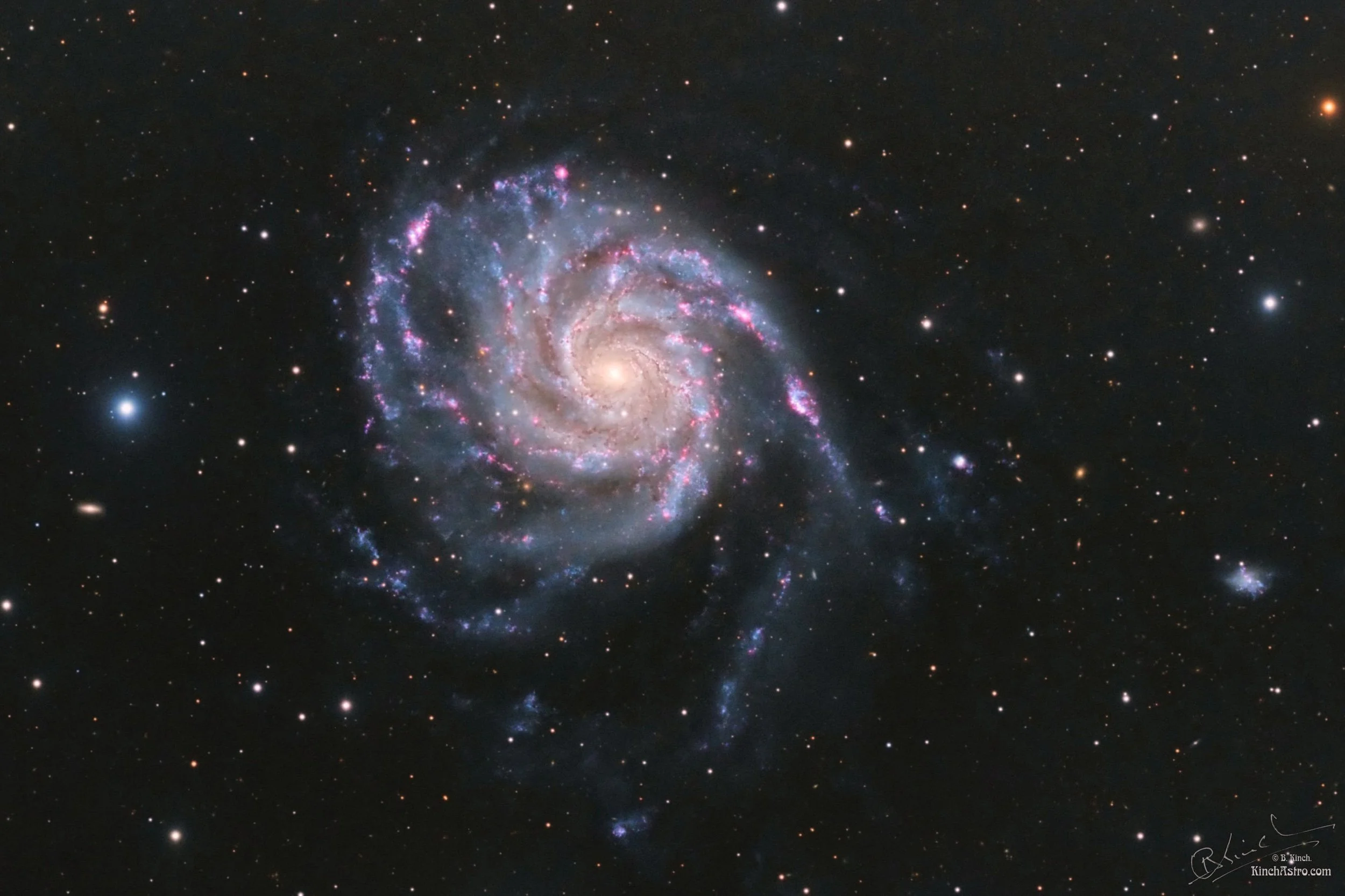
AAPOD2 Image Archives
NGC 2371 Planetary Nebula
Image Description and Details : I first attempted this tiny planetary nebula back in 2019.
I decided to attempt it again by piling on more data, adding in RGB for star color and even tried drizzling the data at 3x instead of 2x. I am much happier with the results. It still took a lot of massaging of the data to get it where I wanted it to be, however.
NGC 2371 is a planetary nebula, the glowing remains of a Sun-like star. The remnant star visible at the centre of NGC 2371 is the super-hot core of the former red giant, now stripped of its outer layers. Its surface temperature is a scorching 240,000 degrees Fahrenheit. NGC 2371 lies about 4,300 light-years away in the constellation Gemini. It is one of the largest planetary nebulas known, measuring roughly three light-years across.
It confused astronomers when it was first studied. Rather than being classified as a single object, it was instead recorded as two objects, named NGC 2371 and NGC 2372, owing to its symmetrical lobed structure.
It is filled with dense knots of gas, fast-moving jets that appear to be changing direction over time, and expanding clouds of material streaming outwards on diametrically opposite sides of the remnant star.
Copyright: Douglas J Struble
SH2-129 & OU4 - Flying Bat & Squid Nebula
Image Description and Details : Data gathered at 13 different nights between 2023-01-01 and 2023-03-30.
Data for this image: 197x300s Ha, 181x300s O-III.
Total number of exposures 378 with a total integration time of 31,5 hours.
Processing: PixInsight with ForaxX HO palette with HA stars.
Equipment: SkyWatcher EvoStar 80ED Pro (0,85x FR/FF) and ZWO ASI294MM Pro on SkyWatcher HEQ5 Pro with SkyWatcher EvoGuide 50ED and ZWO ASI120MM Mini. ZWO Ha and OIII filters.
Copyright: Mårten Frosth
M82
Image Description
This is an image of M82, also known as the Cigar Galaxy. It is a starburst galaxy about 12 million light years away in the constellation Ursa Major. It is about five times more luminous than the Milky Way and its central region is about one hundred times more luminous. The starburst activity is thought to have been triggered by interaction with neighboring galaxy M81.
January 21 - February 22, 2017
December 16, 2021 - January 26, 2022
Location: Rancho Hidalgo, NM
Telescope: Planewave CDK-17
Camera: Apogee CG16M (2017 Data)
Camera: FLI PL16803 (2022 Data)
Mount: Paramount ME
Luminance: 59x20 minutes (binned 1x1)
Ha: 12x30 minutes (binned 1x1)
Red: 28x15 minutes (binned 1x1)
Green: 27x15 minutes (binned 1x1)
Blue: 28x15 minutes (binned 1x1)
Copyright 2023 Bernard Miller
Elephant Trunk Nebula
Image Description and Details : Nebulosa Proboscide di Elefante IC1396 nella costellazione di Cefeo.
Newton 10' f5
Neq6 pro
Asi294Mc Pro T 0°
Guida Asi224Mc
Filtro L_eNhance
Light 45x300"
Dark 21
Flat 31
Acquisizione N.I.N.A.
Post DSS, Pixinsight, Photoshop Camera Raw
Scatto prima periferia di Ferrara Bortle 5.5
Copyright: mirco turra
Ceres meets Galaxy
Image Description and Details : The Dwarf Planet or Asteroid CERES crossed my field of view of the galaxy M100 in constellation coma berenices from 24th to 29th of March 2023, imaging from Augsburg (Germany) with the private remote scope "Wolfatorium" in Hakos, Namibia. To document this "transit", short images where taken at 21.00 and 1.00 CET every day. Additional images were taken at 4.30 on the night of crossing the galaxy. The whole field was imaged with much longer exposures for two nights before CERES entered the frame. The Asteroid images were made starless and the single - strong dimmed - CERES copied into the galaxy frame.
Telescope: 10"-Newtonian f/4
Camera: ASI 1600 MM Pro @ -15°C & gain 139/10
Filter: Baader L-RGB
Galaxy: L 84 x 120s, RGB 24 x 60s each
CERES: LRGB 1s each
Processing: PixInsight, Photoshop
Copyright: copyright: Dr. Siegfried Weida
Maffei I & II galaxies
Image Description and Details : Maffei I and II Galaxies.
Shots taken with RC8" 0.75x reducer.
QHY163M mono camera and IR685nm filter as luminance.
Star colors made with QHY163C color camera and L-PRO light pollution filter.
2 panels mosaic.
Technical details:
QHY163M with infrared pass filter IR685nm: 24 x 10min.
QHY163C with L-PRO filter: 20 x 3min.
Total whole mosaic shooting: 10 hours.
Both cameras were set with the following parameters: Gain= 300, Offset= 100, T= -25°C.
Made Dark, Flat and Dark-flat.
From my home: Vigevano (Pavia), Italy.
Copyright: Roberto Frassi
Strottner-Drechsler 163 / PNG 184.4+05.4
Image Description and Details : Strottner-Drechsler 163 / PNG 184.4+05.4
This candidate planetary nebula was discovered by our team in August 2022.
StDr 163 in the constellation Gemini is without doubt one of the most beautiful objects in the StDr catalogue.
The remarkable aspect of this nebula is that we can literally watch the structure expand.
The hot star in the centre is surrounded by a constantly growing envelope of ionised oxygen (OIII).
Gently, the blue OIII core breaks through the red cocoon of ionised hydrogen (H-alpha).
It is not known whether the reddish halo area around the nebula, which resembles two wings, belongs to the object itself, or whether it is interstellar material that is ionised and excited to glow by the potential white dwarf in the centre.
Discovery by my amazing friends Xavier Strottner and Marcel Drechsler. Data capture by myself and Sven Eklund from our remote observatories in Spain. Image processing by Marcel Drechsler.
Scopes: APM TMB LZOS 152 Refractors and Celestron C14 Edge HD
Cameras: QSI6120wsg8 and ZWO ASI6200MM Pro
Mounts: 10Micron GM2000 HPS and iOptron CEM120
A total of 76 hours 40 minutes (HaOIIIRGB)
More information at
Copyright: Copyright: Peter Goodhew, Sven Eklund, Xavier Strottner, Marcel Drechsler
M 87 - Supermassive Black Hole relativistic jet
Image Description and Details : The supermassive black hole powering M87's core has a mass about 6.5 billion times that of the Sun and generates two jets of plasma in opposite directions that span thousands of light-years. The jet oriented towards the Earth is visible and appears blue / light blue while the other is extremely weak and is not visible. The great luminosity and blue tint of the jet are due to the relativistic effect called "relativistic beaming" or "Doppler boosting" which occurs because particles oriented towards our line of sight are accelerated by the black hole up to 99% of the speed of light and simultaneously emit radiation.
Scope: Meade LX200 10” ACF Camera: QHY268m Filters: Astrodon LRGB Tru-balance Mount: 10 Micron GM2000 HPS II
Processing: PixInsight Exposure: 10h 30m
Copyright: Antonio Ferretti & Attilio Bruzzone
NGC 5367
NGC 5367 is a reflection nebula around 2500 light years away in Centaurus. It is embedded in the Cometary Globule CG 12.
The reflection nebula is lit by a double star H4636 which are type B4 and B7 stars.
Imaged in LRGB on our Planewave CDK 700 at Observatorio El Sauce, Chile.
Image Processing: Mike Selby and Mark Hanson
IC 443
Image Description and Details : On the right of the picture, IC 443, or SNR G189.0+03.0, is a supernova remnant located in the constellation of Gemini, with a large angular size (45 minutes of arc, or one and a half times the apparent diameter of the Moon), and quite luminous both in X and in radio. Its distance is rather uncertain and is estimated to be between 2800 and 8000 light years, while its age varies between 3000 and 30 000 years.
The supernova afterglow IC443, with a golden colour indicates that the Ha and SII are strongly interacting, and OIII surrounds a large part of the object. OIII has a slightly faster expansion rate.
On the left of the picture, the emission nebula SH2-249, which is not in the same plane as Ic 443. It is at about 5200 AL There is also a very small nebula in the field.
Photo taken in South Portugal . Set Up FSQ 106 on EQ6 Pro mount. Camera ZWO Asi 1600MM .
Photo in SHO, LRVB; 80 hours of exposure, double panels.
PixinSight processing, Photoshop
Copyright: Team ARO
Sunspots in Highlights
Image Description and Details : Sunspots are temporary phenomena that occur on the surface of the Sun, which appear as dark spots and are regions of reduced temperature relative to the regions around it.
In the week of February 27, 2023, the Sun had several sunspots, with the highlight of AR 3234, a very beautiful group of sunspots, with a beautiful sunspot standing out, with many details.
The group of sunspots AR 3237, on the other hand, helped the composition of the photo, highlighting with beautiful groups of sunspots.
The photo was captured on the same morning of February 27, 2023, in 02 different telescopes (with an ASI290MM camera + Baader white light filter + Baader Solar Continuum Filter): an 11” SCT (C11 - in the details with photos on the right) and an APO 80mm composing a mosaic of 02 panels in full disk, defining the context of the location of the large groups of highlighted sunspots.
Its yellowish coloring is artificial, as the capture is made with a monochromatic camera with a white light filter, enhancing these beautiful images.
This composition with full disk (on the left) and large sunspots highlighted (on the right) presents a beautiful scenario of that beautiful moment.
Copyright: Natan Fontes
NGC 4631 The Whale Galaxy
Image Description and Details : NGC 4631 (also known as the Whale Galaxy or Caldwell 32) is a barred spiral galaxy in the constellation Canes Venatici. This galaxy's slightly distorted wedge shape gives it the appearance of a herring or a whale, hence its nickname.Because this nearby galaxy is seen edge-on from Earth, professional astronomers observe this galaxy to better understand the gas and stars located outside the plane of the galaxy.
Equipment :
OTA : Newton 12 f4
Mount : EQ8 pro
Camera : Atik Apx60
Reducer : Riccardi 2.5" Wynne Newtonian coma corrector
Focuser : Pegasus Astro Prodigy
Guiding : Stellarvue sv80st2 Lodestar X2
Filters : Astronomik CLS
Exposure:
L : 2 h
RGB : 2h
Location :
Chalkidiki (bortle 4)
Copyright: Copyright : George Chatzifrantzis
The Glorious Whirlpool (M51)
Image Description and Details : Hi. Here is my image of M51 from my Bortle 6 backyard. I took this with the following equipment over the last 2 weeks:
C11 Edge HD
Hyperstar V3
Asi1600mm
Filters: LRGBHa
Processed entirely in Pixinsight
Total exposure was 24.9 hours.
This is one of the most detailed image of this object I have seen from an amateur. Please let me know if any more info is required.
Abdur Anwar
Cochrane, Alberta
Copyright: Abdur Rahman
A gem in Auriga -Pa J0637.4+3327
Image Description and Details : Name: Pa J0637.4 +3327
Catalog number: PNG 181.2+11.8
Coordinates: 06 37 28.2 +33 27 07.5 (J2000)
Pa J0637.4 +3327 is a candidate for a planetary nebula in the constellation Auriga and this is the first image of this nebula ever taken.
The object was discovered by the famous and highly successful amateur astronomer Dana Patchick back in December 2018.
Pa J0637.4 +3327 consists of a hot star of magnitude 17.19 surrounded by a nebula about 15 arcminutes in diameter. The total extent of the nebula in H-alpha is probably 30 arcminutes or more.
If a spectrum confirms that it is a true planetary nebula, then Pa J0637.4 +3327 is an exceptionally large representative of its class, making it additionally a true rarity. Optics: Stellarvue SVX 152T, Camera: ZWO ASI 6200MM pro. RGB, 2 hours each filter, Ha 25hrs, OIII 27.6hrs for a total imaging time of 58hrs 40min. Data Credit: Jonathan Talbot, Processing Credit: Marcel Dreschler
Copyright: Copyright: Jonathan Talbot, Marcel Dreschler
Venus Cloud Discontinuity
Image Description and Details : Venus March 24 2023
Under good seeing conditions, average transparency.
The Cloud Discontinuity on the right limb can be seen.
Setup:C14 Edge HD, Fornax52 mount, QHY5III200M,FFC Badder Barlow, Baader Sloan z-s' 820-920nm, Chroma U- Bessel
Agerola-Amalfitan Coast-Italy
Copyright: luigi morrone
Sharpless 115 & 116 and Co in Cygnus
Image Description and Details : This image features many interesting celestial objects in Cygnus, the brightest star in that constellation. First and foremost, there are two Sharpless objects known as SH2-115 & SH2 116. The first one is a very large, faint emission nebula approximately 2 degrees northwest of Deneb. Its neighbor, SH2-116, is a small round planetary nebula, featured also in this image. Secondly, they are many LBN objects in the field of view – too much ! Let’s pause there for the time being….
Copyright: @ae_astrophotoons
Location: Spain, my remote observatory
Telescope: Takahashi TOA 130 NFB
Camera: ASI 6200 mm pro
Mounts: 10 Micron 1000 HPS
Filters:
-Chroma Blue 50 mm
-Chroma Green 50 mm
-Chroma Red 50 mm
-Chroma H-alpha 3nm Bandpass 50 mm
-Chroma Sii 3nm Bandpass 50 mm
-Chroma Oiii 3nm bandpass 50mm
Integration time: 22H
Copyright: Aygen Erkaslan
LUNAR OCCULTATION OF VENUS
Image Description and Details : I spend 1.5 hours to capture the distance between moon and venus at Kolkata, India from 6:02 pm to 7:36 pm... Here 15 images stacked that shows from the Rise of Venus to go far away...
Copyright: Shreya Roy
Beacon in the dark universe
Image Description and Details :RECORDING DATA:
Object: Markarian chain
Date taken: March 2023
Distance: Between 33 and 98 million light years
Exposure: RGB each 73 x 120 sec. / Gain 56 at -15 °C
Luminance: 387 x 150 sec / Gain 0 at -15°C
Total: 23.4 hrs
Calibration: BIAS / Flats / DarkFlats
Mount: Skywatcher EQ6-R PRO
Telescope: Lacerta 10″ Fotonewton 250/1000
Corrector: Pál Gyulai GPU coma corrector
Filter: Antlia LRGB-V Pro
Camera: QHY268m
Guiding: QHY OAG with QHY5III462c and PHD2
Software: APP/PI/Photoshop CC
Copyright: Daniel Nimmervoll
M 101 - Pinwheel Galaxy
Image Description and Details : The Pinwheel Galaxy (also known as Messier 101, M101 or NGC 5457) is a face-on spiral galaxy distanced 21 million light-years (six megaparsecs) away from Earth in the constellation Ursa Major. Discovered by Pierre Méchain on March 27, 1781, it was communicated to Charles Messier who verified its position for inclusion in the Messier Catalogue as one of its final entries.
M101 is a large galaxy, with a diameter of 170,000 light-years. By comparison, the Milky Way has a diameter of 100,000 light years. It has around a trillion stars, a little more than twice the number in the Milky Way. It has a disk mass on the order of 100 billion solar masses, along with a small central bulge of about 3 billion solar masses.
M101 has a high population of H II regions, many of which are very large and bright. H II regions usually accompany the enormous clouds of high density molecular hydrogen gas contracting under their own gravitational force where stars form. H II regions are ionized by large numbers of extremely bright and hot young stars; those in M101 are capable of creating hot super-bubbles.
M101 is asymmetrical due to the tidal forces from interactions with its companion galaxies. These gravitational interactions compress interstellar hydrogen gas, which then triggers strong star formation activity in M101's spiral arms that can be detected in ultraviolet images.
Imaging telescopes or lenses: Takahashi FSQ130ED
Imaging cameras: QSI 6120i
Mounts: Takahashi EM 400 Temma 2M
Guiding telescopes or lenses: Takahashi FS60CB
Guiding cameras: QHY CCD QHY 5 II
Focal Extender / Reducer: None
Software: Sequence Generator Pro SGP (for capture) PHD 2 (guiding), Astro Pixel Processor & PixInsight,
Filters: Astrodon LRGB Astrodon Ha (3nm)
Dates: 3rd Mar 2019 - 8th Mar 2019 AND 22nd March 2023
Copyright: Brendan Kinch
IC 5146 - COCCON NEBULA
Image Description and Details :
This photo of IC5146 was taken over several nights between August and September 2022 from the south of France.
A 200/800 newton telescope and a ZWO ASI 1600MM pro camera were used.
Antlia 3nm Narrowband H-alpha 1.25": 280×240″(18h 40′) (gain: 139.00) f/3.8 bin 1×1
ZWO 1.25" R: 60×180″(3h) (gain: 0.00) f/3.8 bin 1×1
ZWO 1.25" V: 60×180″(3h) (gain: 0.00) f/3.8 bin 1×1
ZWO 1.25" B: 60×180″(3h) (gain: 0.00) f/3.8 bin 1×1
ZWO 1.25" Lum zwo 1.25" Lum: 250×180″(12h 30′) (gain: 0.00) f/3.8 bin 1×1
Integration:
40h 10′
Copyright: PUIG Nicolas

